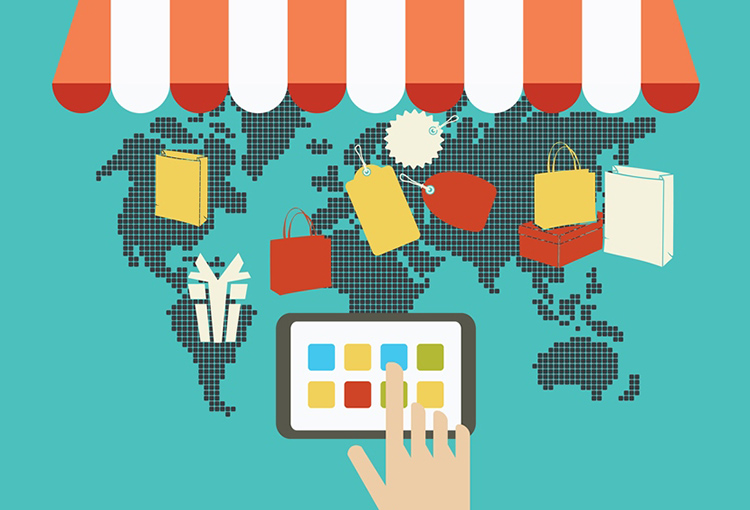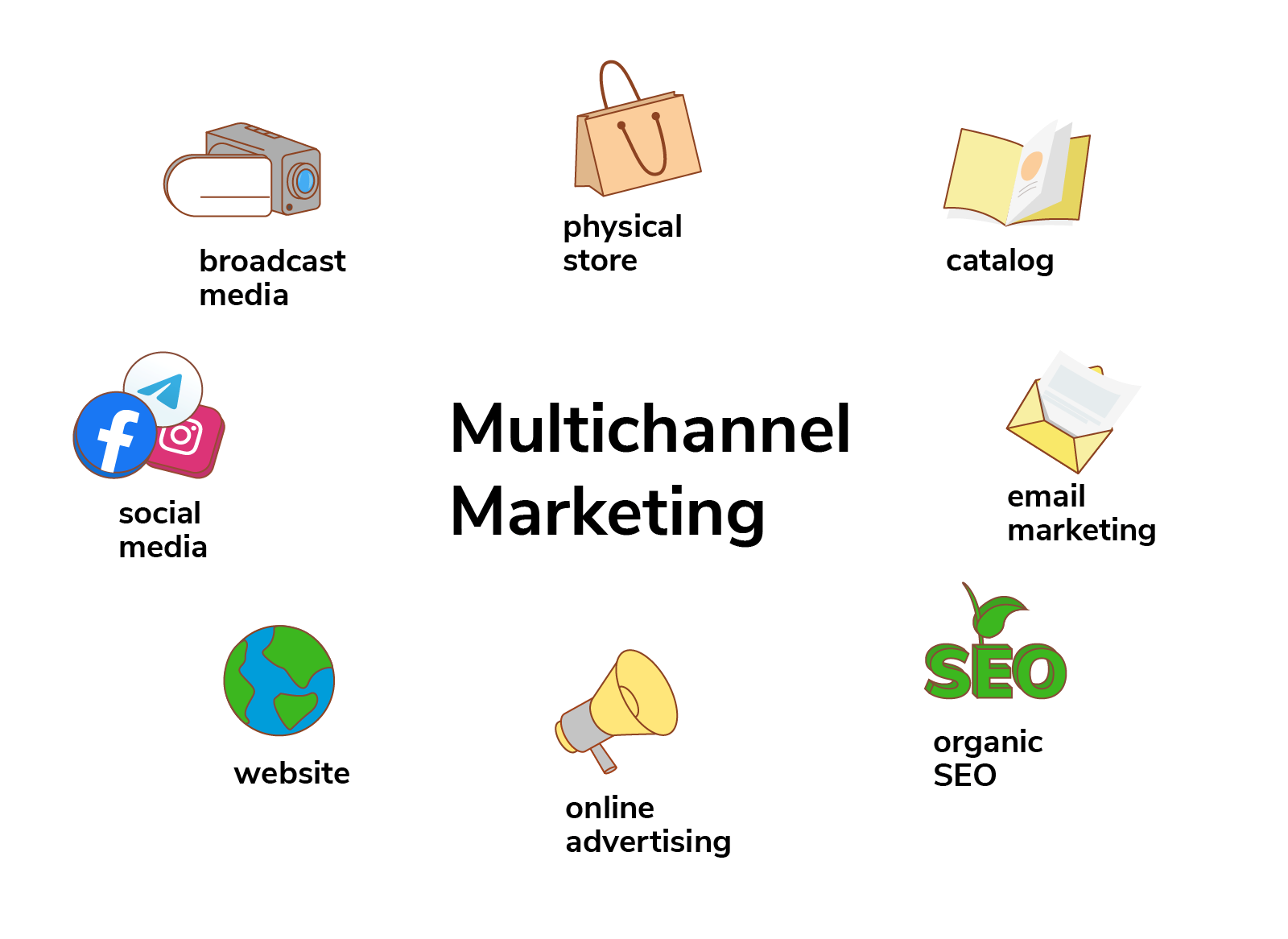Should You Sell via d2c, Marketplace or Multichannel in India ?

The rapid expansion of Southeast Asia's eCommerce offers lucrative potential for cross-border selling on eCommerce, particularly the recently developed Direct to Consumer model (D2C). Selling products in India directly to customers(D2C) without going via wholesalers and retailers is a successful sales approach. According to a survey, 88% of consumers genuinely like to buy directly from the brands. Now, it is simpler and less expensive to sell directly to consumers.
Even though each brand's eCommerce requirements are unique, marketers should evaluate the expenses and resources associated with each channel to determine which strategy best suits their entire business plan. A brand may eventually decide to use both.
Online marketplace in eCommerce and the internet are all to thank. But where should you sell? Let's find out!
1. The D2C Approach

Direct-to-consumer (D2C) refers to removing mediators, allowing manufacturers to sell to end customers directly. There are a lot of benefits, but there are also some brand-new challenges.
Growth Jockey has surveyed that due to the growth of the internet and the adoption of online shopping, D2C business models in eCommerce operations are becoming more and more common. The rise of the direct-to-consumer approach has paralleled the expansion of eCommerce over the previous ten years.
D2C business model is emerging in several sectors, from mattresses and dog food to cosmetics. D2C firms are adept at implementing disruptive strategies that are gaining the devotion of customers thanks to the emergence of more user-friendly eCommerce technology and the popularity of social media.
Benefits of the D2C Approach
-
You have complete control over the sales, marketing, and distribution processes as a D2C business. As a result, you can do direct business and have closer ties to customers.
-
A D2C company can get more client information and insights, enabling it to modify its marketing tactics and customer experience as necessary. Similar to how improved distribution of products increases the likelihood of increased sales, this rise in insights enables firms. It results in increased prospects for development and profit.
Challenges of the D2C Approach
-
D2C trade has several additional drawbacks despite these advantages. Without retailers, D2C enterprises manage the entire supply chain, from production to warehousing and delivery.
-
D2C enterprises must therefore invest more time and effort in organizing their processes to supervise each stage. It is a challenging task to develop a competitive online presence.
-
Your internet presence is your primary point of contact with customers if you run a D2C business, making it essential to your success.
-
It takes a lot of time and effort to handle problems like refunds, client complaints, and feedback while also developing a quick response system.
2. The Marketplace Approach

Whether selling on eCommerce or online marketplace, audience interaction has always been a vital component of online commerce. GrowthJockey has observed that the issue with online markets is that they put much effort into promoting seller-buyer interaction. They offer features like live selling, flash deals, and chat with potential customers.
Like in any actual market, customers may even submit offers and haggle over the cost of your goods. The online market, however, is a crowded space. Due to the increased competition, marketplace owners push sellers to offer more products.
Benefits of the Marketplace Approach
-
The strategy for marketing should focus on using appropriate keywords to improve the product listing, updating the premium pictures, increasing client engagement, and getting more favourable reviews.
-
On the other hand, if you decide to build an eCommerce website, you will be responsible for handling all marketing and advertising. However, if done correctly, you will have access to vast data and be able to make wise decisions.
-
You can raise customer engagement, encourage repeat business, and boost conversion and sales by offering a tailored experience.
-
Customers enjoy the quick delivery that marketplaces provide. Online customers become more interested when a free delivery coupon is provided (one of the best marketplace marketing efforts). It is a fantastic incentive for you as a seller to boost sales and earn 5-star reviews.
-
The best-reviewed products frequently appear at the top of search results, making them more visible to customers and increasing the likelihood of purchase.
Challenges of the Marketplace Approach
-
Before listing your products on a marketplace, it is a good idea to check out the competition in all the markets, especially within your product category. Investigate the marketplace activity of your rivals and the availability of your brand and products.
-
Growth Jockey observed that 25% of all landing pages for eCommerce in India are product description pages (PDPs).
-
Many brands use several indirect eCommerce platforms, such as marketplaces with their own direct sales channels.
-
Product experience management has gained prominence in the world of product data. It emphasizes having a fantastic experience from start to finish.
-
Giving customers precise, consistent product information and expectations from the research stage through the purchase
3. The Multichannel Approach

The process of selling your goods or services across multiple sales channels is known as multichannels in eCommerce. A combination of your website, an online store and shopping cart, multivendor marketplaces, mobile marketplaces, and brick-and-mortar stores are all included in multichannel management.
Before, there were only two alternatives for multichannels in Ecommerce: brick-and-mortar stores and catalogues. Before developing eCommerce operations, expanding a business's customer base required franchising a physical location or getting a record in front of new customers.
If you offer your goods or services, you ought to use multiple sales channels. Whatever the size of your company, selling on several sales channels gives businesses a competitive edge over even bigger retailers. Our experts at GrowthJockey can help you decide how to implement the multichannel approach.
Your multichannel selling plan can include an online store's shopping cart, online bazaars like Etsy, app-based markets, websites like Instagram and Facebook, search engine-like comparison sites, and a physical establishment.
Benefits of the Multichannel Approach
-
Every sales channel has its distinct clientele, target market, marketing initiatives, and advantages.
-
The benefits of multichannel selling include increased customer touchpoints, expanded product market reach, coordinated marketing initiatives, increased brand awareness, and increased sales.
-
Multichannel sales and an omnichannel experience can positively impact a brand's online business. Take the appropriate actions for your web presence if you haven't previously.
Challenges of the Multichannel Approach
-
The most crucial factor is that multichannel sales are journey brands should integrate one step at a time. Start by gradually extending your sales channels and test which generates the most interest in your company.
-
Over time, success is assured, but throwing all resources into it can backfire if you scale too quickly. Although multichannel selling has its obstacles, these are the key ones:
-
When you sell through several channels, the biggest problem is inventory control.
-
Every channel has customers, so anyone can click on the items you offer. Because of this, each channel needs a proper inventory management system, but doing so is quite hard.
-
Managing shipping and returns is a significant difficulty faced by multichannel merchants. The shipping returns and refund policies for various channels vary, which causes further headaches for eCommerce company owners.
-
Returns and refunds now give merchants the willies, so imagine how much worse it will be when they come from every channel. It will make handling returns and refunds extremely challenging.
So, based on the benefits and challenges of each approach, brands can select the best one for them.
Conclusion
The D2C model continues to give various benefits to customers. To address the constantly shifting needs of clients and successfully scale in the future, it is crucial to keep disrupting the plan.
Along with the advantages, D2C also reduces the time to market, allowing brands to introduce products on a smaller scale to consumers. D2C involves more than just opening an eCommerce store. The D2C model has recently gained popularity in India. Therefore, this movement will likely continue for some time.
Brands can sell through any medium, like D2C, marketplace, or multichannels in eCommerce, according to their needs. Brands should analyze the benefits and challenges of these approaches before implementing them.
Keeping this in mind, GrowthJockey has provided the benefits and challenges of all the methods to make your decisions easier. Furthermore, each brand must fulfil customer expectations as customers continue to drive online sales.
GrowthJockey is ideal for getting the best expertise to build your brands.
At GrowthJockey, our sole focus is on creating custom solutions that address the unique challenges faced by our clients in the e-commerce industry. We are committed to helping businesses of all sizes, from small-scale enterprises to large corporations, harness the power of technology.
Get in touch with us today to scale your business with our expert eCommerce solutions !
FAQs
1. What is the difference between D2C and B2C?
Direct-to-consumer (D2C) sales occur when a brand sells its products directly to consumers. However, in B2C (or business-to-consumer), an organization purchases a product from a manufacturer and then sells it to the consumer.
2. Why choose D2C?
Before, the manufacturers would create the goods, and retailers or wholesalers would sell them. With the advent of internet shopping, online retailers arose, but the essential business model of the brick-and-mortar world generally remained unaffected. Modern consumers desire direct communication with brands to compare pricing, read product reviews, offer comments, and access a wealth of other information.
3. What different types of D2C models do brands offer?
Different types of D2C models offered by brands to customers are-
-
Pure Play D2C Model: A pure-play direct-to-consumer (D2C) strategy eliminates intermediaries and sends goods straight from factories to buyers.
-
Omnichannel D2C Model: The main goal of the omnichannel model is to keep the consumer at the centre and interact with them simultaneously across platforms.
-
Hybrid D2C Model: In the Hybrid D2C model, brands sell products on both the Brand website and eCommerce marketplace.








